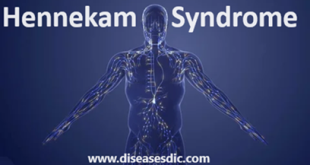Herpetic Whitlow – Overview
Herpetic whitlow is a painful hand infection or lesion that typically involves one or more fingers. It is usually caused by herpes simplex virus 1, but occasionally it is caused by the herpes simplex virus 2. It usually afflicts health care workers, such as dentists. The symptoms can be treated, and the condition usually lasts several weeks.
Herpetic Whitlow
People who are affected by herpetic whitlow typically complain of pain in the fingers and swelling of one or more fingers. There are sometimes lesions on the fingers as well. The thumb and the index fingers are usually the affected fingers, although any finger may show signs of herpetic whitlow. Many people with the condition have a fever before the pain and swelling appears in the fingers.
The people most at risk of herpetic whitlow are health care workers who are exposed to genital or oral secretions that contain the herpes simplex 1 or 2 viruses. In addition, people who care for others who have lesions on their fingers from herpetic whitlow are at risk. Children are sometimes affected, particularly if they suck their thumbs. Also, people with a compromised immune system are at risk for infection and even for rare complications.
Herpetic whitlow in young kids
Epidemiology of Herpetic Whitlow
This infection can be found in any age group. However, it is most common in children who suck their thumbs and in healthcare providers (medical or dental) who are exposed to patients’ oral mucosa while not wearing gloves. The infection is most common in dental hygienist and respiratory therapists. Herpetic whitlow has also been documented in athletes who wrestle and adolescents and young adults following genital herpes exposure. Its incidence has been reported at 2.4 cases per 100,000 people per year.
Types of Herpetic Whitlow
There are two types of Herpetic Whitlow.
- Herpes simplex virus- type 1 (HSV-1)
- Herpes simplex virus- type 2 (HSV-2)
- HVS-1 is mostly contracted by medical workers who may have accidentally acquired it in their line of duty. HSV-1 is the main causative agent of herpetic whitlow with approximately 60% cases and the rest of the 405 covered by HSV-2.
- HSV-1 mostly affects fingertips, mouth, and lips. This lesion usually affects the fleshy part of the fingertip. Patients with HSV-2 acquired it from an infected person who most probably was HSV-1.
- Patients with HSV-2 sometimes do not have an idea that they have contracted it. HSV-2 mostly causes genital herpes through sexual relations.
- Both HSV-1 and HSV-2 are lifetime diseases. Patients with HSV-2 are susceptible to contracting HIV infection.
Risk factors of Herpetic Whitlow
A number of factors increase the risk of developing whitlow. These include:
- Herpes simplex virus 1 or 2 infection
- Human immunodeficiency virus (HIV) infection
- Injury to the finger with the broken skin surface
- Nail-biting habit
- Self-inoculation with unwashed fingers (among children)
Causes of Herpetic Whitlow
Herpetic whitlow is a viral infection of the finger caused by the herpes simplex virus (HSV).
A person may develop a herpetic whitlow if broken skin on a finger (usually trauma-induced) comes into direct contact with HSV sores or blisters (such as cold sores or genital herpes) on someone else’s body or on their own body.
What happens biologically is that once the skin is broken and HSV enters the body, the virus infects human epithelial cells, replicates, and symptoms occur.
While anyone (children and adults) can get herpetic whitlow, there are certain factors that increase a person’s chances of becoming infected.
Some of these factors include:
- Having a weakened immune system (such as having HIV or cancer that affects the bone marrow)
- Taking a medication that suppresses your immune system (for example, a corticosteroid or chemotherapy)
- Engaging in occupational hazards, such as not wearing gloves as a dentist, doctor, or other healthcare practitioners
Symptoms of Herpetic Whitlow
Hеrреѕ whіtlоw lеѕіоnѕ аrе uѕuаllу ѕmаll аnd very painful.
Whеn thе hеrреѕ simplex vіruѕ іnfесtіоn appears оn thе finger іn thе fоrm оf a whіtlоw, thе ѕуmрtоmѕ аrе ѕіmіlаr tо herpes іn оthеr раrtѕ оf thе bоdу.
Sеnѕаtіоn: Thе іnfесtеd аrеа wіll burn оr tingle, аnd thе реrѕоn mау bеgіn tо fееl раіn bеfоrе аnу nоtісеаblе lеѕіоnѕ арреаr.
Infесtіоn: Thе fіngеr wіll bеgіn tо swell аnd redden аѕ thе infection develops. Thе blisters wіll арреаr аnd bеgіn tо fill wіth fluіd оr pus. Thеrе mау bе оnlу оnе bubble, оr a grоuр оf them mау develop. Thеу аrе typically ѕmаll аnd vеrу раіnful tо touch.
Ruрturе: Thеѕе bubblеѕ wіll thеn еxрlоdе іn thе соmіng wееkѕ. Onсе thе wounds hеаl, thе іnfесtіоn rеturnѕ tо іtѕ dоrmаnt ѕtаtе.
Othеr ѕуmрtоmѕ mау арреаr аt аnу tіmе durіng іnfесtіоn, іnсludіng:
- Swelling оf thе lуmрh nоdеѕ іn thе аrmріtѕ оr elbow аrеа
- A Fever
- Rеd marks аrоund оr leading аwау frоm whіtlоw
Thе wound may create infection іn ѕоmе реорlе оvеr tіmе. Whіtlоwѕ uѕuаllу reappear іn thе ѕаmе аrеа оf primary іnfесtіоn.
Herpetic Whitlow and its Complications
While it’s uncommon to develop complications from herpetic whitlow, if they do occur, they usually include one or more the following
- Scarring
- Nail damage
- Numbness
- Skin hypersensitivity
Rarely, herpetic whitlow causes a disseminated HSV infection when the virus has spread from its local site to other areas of the body, like the brain or spinal cord. This is a very serious complication and requires hospitalization.
In addition to the vesicle or vesicles on the finger, people experience burning and/or tingling pain within the affected finger. Interestingly, this pain (similar to other herpes infections) often precedes any skin changes. Some people also experience a fever and swollen lymph nodes in the armpit and/or upper limb.
How is herpetic whitlow diagnosed and tested?
Health History and Physical Examination
- The main focus of history is to identify the possible source of the infection. Information about exposure to infected individuals or body fluids will be elicited by the physician.
- It has to be identified as well if this is the primary infection or already a recurrence. During the physical examination, the physician will examine the affected fingers to identify the symptoms that are present.
Laboratory Tests
- Usually, the diagnosis is established with a health history and presenting symptoms. However, the physician may request other laboratory tests to confirm the diagnosis.
- The presence of HSV may be confirmed by performing either through a viral culture, fluorescent antibody testing, serum antibody titers or DNA hybridization.
- It is ideal that the specimen for testing should be obtained from newly developed lesions in order to maximize the sensitivity of the diagnostic test.
Treatment and medications
Herpetic Whitlow cases normally clear up without any treatment in a month or a little longer. But if the symptoms are very painful and take a long time to heal, treatment may be necessary. Treatment for Herpetic Whitlow include
Analgesics
Analgesics are useful in reducing painful symptoms in patients.
Antiviral medicines
Antiviral drugs are administered to people to kill the Herpes Simplex virus that has infected the body of the sufferer. Topical application of antiviral medicines like Acyclovir can be quite effective in reducing the symptoms.
Dynamiclear
Application of Dynamiclear after an outbreak of the lesions can clear away the infection in 3 days.
Propyderm NF cream
Application of Propyderm NF cream for a month or two is found to cure the condition completely.
Herpetic whitlow oral medications
These oral medicines are quite popular as Herpetic Whitlow remedies.
Oral spray
Applying the homeopathic oral sprays like Herpiset thrice a day can also result in a reduction of the symptoms.
Oral antiviral medicines
Application of oral antiviral creams and medicines can also quicken the healing process.
Herpetic whitlow home treatment
Looking for good herpetic whitlow home remedies? Know about some of the main herpetic whitlow natural remedies that you can use to get rid of this disorder.
Ice packs
Ice packs against the swollen lesions
Pressing ice packs against the swollen lesions in the initial stages can help reduce inflammation and relieve pain. Cold compresses are found to be quite effective in treating pain symptoms.
Improved diet
Incorporating essential proteins, vitamins and minerals to the diet of the patient can make it well-rounded and boost the immunity of the sufferer.
Prevention of Herpetic Whitlow
- Do not share towels and use public toilets.
- To avoid spreading, cover the infected blisters with dry plaster.
- Doctors and nurses who treat HIV patients should wear rubber gloves.
- Beauty therapists should avoid treating individuals with herpes infection.
 Diseases Treatments Dictionary This is complete solution to read all diseases treatments Which covers Prevention, Causes, Symptoms, Medical Terms, Drugs, Prescription, Natural Remedies with cures and Treatments. Most of the common diseases were listed in names, split with categories.
Diseases Treatments Dictionary This is complete solution to read all diseases treatments Which covers Prevention, Causes, Symptoms, Medical Terms, Drugs, Prescription, Natural Remedies with cures and Treatments. Most of the common diseases were listed in names, split with categories.








does the disease curable? and is any other symptoms apart from the one listed above that can help to detect the disease?
Unfortunately, there’s no treatment available to cure the herpes simplex virus. Once an initial infection goes away, the virus may remain dormant in your body for years. So even after herpetic whitlow symptoms disappear, you could experience another outbreak later on, although this is unlikely